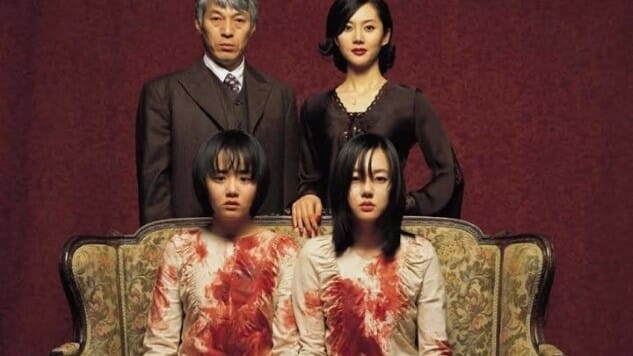The Best Horror Movie of 2003: A Tale of Two Sisters

This post is part of Paste’s Century of Terror project, a countdown of the 100 best horror films of the last 100 years, culminating on Halloween. You can see the full list in the master document, which will collect each year’s individual film entry as it is posted.
The Year
After a pretty strong opening to the decade, 2003 is an oddly weak year for the genre, especially in terms of American output—there just aren’t many notable U.S. films here at all, but thankfully the international horror movies pick up the slack. It continues to be a prolific era for Japanese horror films, with such entries as Gozu and 2LDK, but they’re by no means the only Asian nation producing notable genre movies at this point—look no further than this year’s #1, A Tale of Two Sisters from South Korea.
Of the international offerings, one of the most notable, interesting and ultimately frustrating is France’s High Tension from director Alexandre Aja, a stylish stalk-and-kill horror thriller that features some of the most vicious bloodletting of the decade. A notable entry in the movement dubbed New French Extremity, the film centers around a young woman who visits a friend’s family before a serial killer begins systematically killing everyone around her. It gained infamy both for its over-the-top splatter and a twist ending that sadly strains the credibility of what the story can reasonably rationalize as it tries to explain itself. It feels like a case where it’s not so much the nature of the twist that is problematic, but the inability of the film to make the past events of the story make sense once the twist is revealed. Perhaps, though, with Aja back in genre fans’ good graces after this year’s surprisingly well received Crawl, Haute Tension will be due for a reassessment.
Other notables for the year include one of the most perfect distillations of a simple fear captured for the big screen in the form of Open Water, the start of an up-and-down directorial career for Rob Zombie in House of 1,000 Corpses, the beginning of a long-running series in Wrong Turn and the unnecessary but technically competent remake of The Texas Chainsaw Massacre. Also worth mentioning: Freddy vs. Jason, which is beyond silly, but a guilty pleasure popcorn flick for fans of both series who always wanted to see a titanic brawl between two of the classic slasher villains. It’s impossible to take seriously, but it gave most audience members exactly what they wanted to see, and you can’t fault it for that.
2003 Honorable Mentions: Gozu, High Tension, Identity, Open Water, Dead End, Wrong Turn, Freddy vs. Jason, House of 1,000 Corpses, The Texas Chainsaw Massacre
-

-

-

-

-

-

-

-

-

-

-

-

-

-

-

-

-

-

-

-

-

-

-

-

-

-

-

-

-

-

-

-

-

-

-

-

-

-

-

-








































